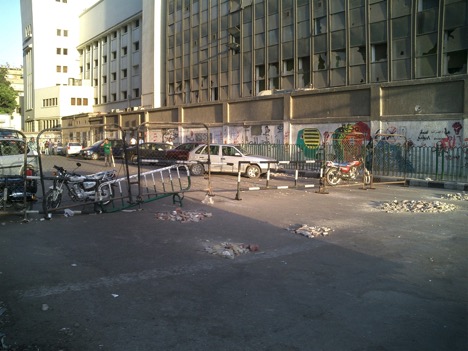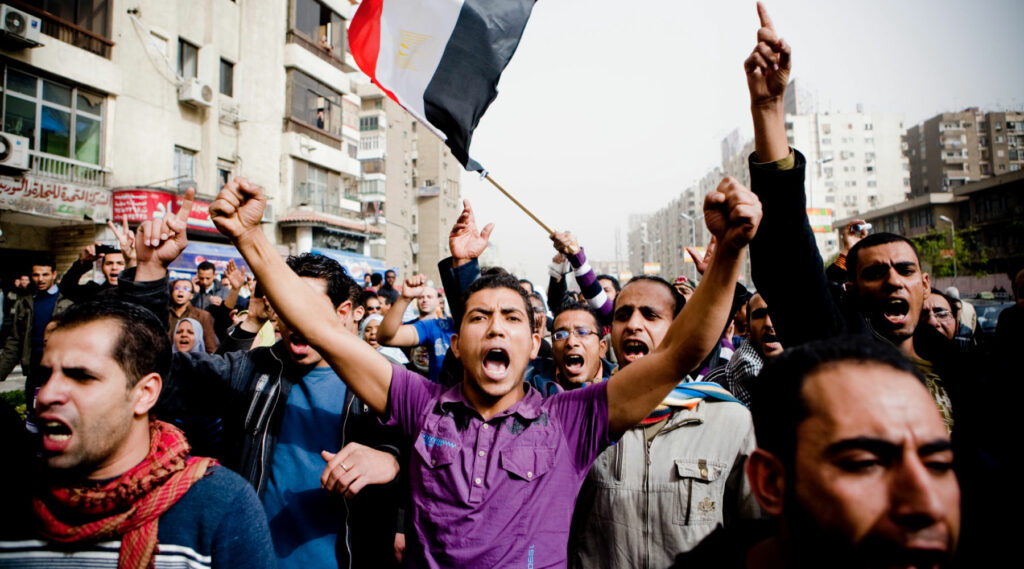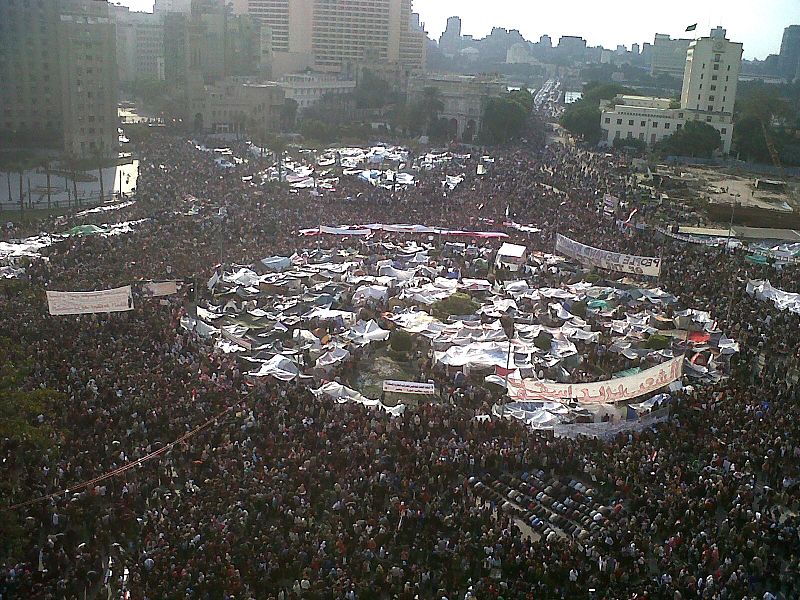Revolutionary Moments At Ismailia’s Midan El Hurriya
Ismailia, a city nestled alongside the Suez Canal, has long been a crossroads of cultures, ideas, and movements. Today, its Midan El Hurriya (Freedom Square) stands as a powerful witness to the revolutionary moments, large and small, that have shaped its identity. But what is it about this central square that has borne witness to so many pivotal events? Why do people keep gathering here, generation after generation, to voice their hopes and demands?

The Historical Significance of Ismailia
Ismailia isn’t just any Egyptian city; it holds a unique spot in the country’s historical and political geography. Named after the Khedive Ismail, its history is intertwined with the very creation of the Suez Canal, a monumental engineering feat that connected the Mediterranean Sea to the Red Sea, transforming global trade routes forever.
The city was originally constructed to accommodate the thousands of international laborers who came to work on the canal. These workers brought with them diverse backgrounds and perspectives, making Ismailia a melting pot of ideas long before it became a hotspot for revolutionary activities. Therefore, the roots of dissent and progressive thoughts can be traced back to its very inception.
The Genesis of Midan El Hurriya
Midan El Hurriya has always been at the heart of Ismailia, both literally and figuratively. Its name, which translates to “Freedom Square,” is evocative enough to tell you what this place stands for. The square has consistently served as a communal space for citizens to express their thoughts, celebrate their victories, and mourn their losses.
Historically, markets, cultural festivals, and public debates have all found a home here. The very design of the square seems to invite gatherings, with open spaces and seating areas that encourage people to stay a while, to talk, to debate, and sometimes, to protest.

The Square During The British Occupation
Let’s reel back to the time of the British Occupation in Egypt, which extended from 1882 until 1956. The British saw the Suez Canal as a crucial asset for maintaining their colonial empire, which made Ismailia a highly strategic location. And where there is strategic importance, there will be resistance.
Midan El Hurriya became a prominent spot for anti-British demonstrations. People from all walks of life—students, laborers, and intellectuals—gathered to voice their discontent and aspirations for freedom. The very existence of these colonial compounds in close proximity to the square often served as a visual reminder of the occupier’s power, fuelling the revolutionary spirit among the locals.
The 1919 Egyptian Revolution
The events of 1919, often referred to as the Egyptian Revolution of 1919, were a watershed moment not only for Cairo and Alexandria but also for towns like Ismailia. Inspired by leaders like Saad Zaghloul, Egyptians from diverse walks of life came out to demand freedom from British rule. Midan El Hurriya saw an unprecedented wave of protests during this period.
People occupied the square day and night, with banners, chants, and passionate speeches. The air was thick with a sense of urgency and collective resolve. These protests played a crucial role in pushing for Egypt’s eventual independence from Britain in 1922. It was one of the first times that Midan El Hurriya proved its mettle as a crucible of revolutionary energy.

The 1952 Revolution and Its Impact
The revolution of 1952, led by the Free Officers Movement, was another significant chapter in Egypt’s history. This was the movement that eventually resulted in the end of the monarchy and the establishment of a republic under President Gamal Abdel Nasser. While Cairo was the focal point, the reverberations were felt in Ismailia as well.
Midan El Hurriya was abuzz with excitement and high hopes. It wasn’t just a place for protests but a venue where ordinary citizens actively participated in discussions about the future of their country. This was a transformative period that made people realize the power they wielded collectively.
The Role During the Suez Crisis
The Suez Crisis of 1956 was a dramatic episode that further solidified Ismailia’s revolutionary reputation. When President Nasser nationalized the Suez Canal, British, French, and Israeli forces invaded Sinai, and Ismailia found itself on the frontlines. The tranquil air of Midan El Hurriya was shattered by the sounds of conflict, but also filled with the unyielding spirit of resistance.
Citizens set up impromptu headquarters, medical stations, and supply depots right in the square. The sense of community and shared purpose was palpable. The defiance displayed at Midan El Hurriya during this period became a symbol of Egyptian resilience and unity against foreign intervention.
Revolutionary Activities in Modern Times
The most recent revolutionary activities at Midan El Hurriya took place during the Arab Spring in 2011. While Tahrir Square in Cairo was a global symbol of the uprising, Ismailia’s Freedom Square had its share of glory and turmoil. People once again gathered in droves, demanding an end to the autocratic rule of Hosni Mubarak.
It was a replay of history but set in a modern context—social media chants replacing hand-painted banners, mobile phones capturing the spirit of the revolution in real-time. Midan El Hurriya during the Arab Spring was not just a physical space but a digital hashtag that connected it to a much larger, global movement for change.
The Square as a Cultural Hub
But Midan El Hurriya is not solely a stage for political upheaval. At its tranquil moments, it transforms into a hub of culture and community. Art shows, musical performances, and literary readings often take place here, highlighting local talent and drawing visitors from beyond Ismailia.
The square is adorned with murals and sculptures that speak to its rich historical and cultural tapestry. It’s not unusual to find yourself in the middle of a spontaneous poetry reading or a dance performance when you visit. This dual identity—as both a political heart and a cultural brain—adds layers to its importance.

Key Landmarks Around the Square
Surrounding Midan El Hurriya are landmarks that further tell the story of Ismailia’s revolutionary spirit. The Suez Canal Authority Building, with its stately architecture, serves as a reminder of the maritime heritage and the pivotal role the canal has played in global politics. The Ismailia Museum nearby houses artifacts that shed light on the city’s ancient and colonial past.
Each building, each street, and each monument around the square has its stories—anecdotes of bravery, resilience, and the undying quest for freedom. Walking around Midan El Hurriya offers you more than just a glimpse into history; it provides a tactile connection to the events that have shaped Egypt’s identity.
Personal Accounts and Stories
The stories of Midan El Hurriya are best told through the voices of those who were part of its history. Families pass down tales of grandparents who fought in the Suez Crisis or relatives who joined the protests during the Arab Spring. These personal narratives make the revolutionary moments at Midan El Hurriya more than just historical facts; they become lived experiences.
People often recount how the square transformed them, how participating in a protest or just witnessing one made them realize the power of collective action. Such testimonials serve to keep the revolutionary spirit alive, inspiring newer generations to understand and embrace their civic responsibilities.
The Square as a Symbol of Freedom
At the end of the day, what makes Midan El Hurriya so unique is its enduring symbolism. It encapsulates the very essence of freedom—freedom to think, to assemble, to protest, and to celebrate. The square stands as a testament to the fact that while regimes may change, the people’s enduring spirit remains the same.
It’s the tangible embodiment of a concept that is universally understood but often hard to achieve. It offers hope and refuses to let the sacrifices of the past be forgotten. For anyone who steps onto this square, the air itself seems to whisper stories of courage and resilience.
Future of Midan El Hurriya
Looking forward, one can’t help but ponder what the future holds for Midan El Hurriya. As Egypt continues to navigate its social, political, and economic challenges, the square is likely to remain a focal point for expressions of discontent and aspirations for change. New generations will undoubtedly find their way here, adding their voices to the chorus of history.
With the rise of digital activism, Midan El Hurriya may also evolve into a more technologically integrated space, where physical presence and virtual protests coexist. The adaptability and timeless significance of the square will likely continue to make it a pivotal location for revolutionary activities.
Conclusion
Midan El Hurriya isn’t just a square; it’s a living archive of Ismailia’s—and Egypt’s—quest for freedom and justice. From the British Occupation to the Egyptian Revolution of 1919, the 1956 Suez Crisis, the 2011 Arab Spring, and beyond, its open spaces have consistently served as a battleground for ideas and ideals.
While you immerse yourself in stories of the square, remember that the revolutionary spirit enshrined in Midan El Hurriya is not just confined to Egypt. It’s a reminder of the universal truth that the fight for freedom and dignity is a global endeavor. So if you ever find yourself in Ismailia, make sure to visit Midan El Hurriya and perhaps leave a small part of your own story within its storied confines.
If you enjoyed this read, please clap for the article, leave a comment, and subscribe to my Medium newsletter for more updates. Thank you for journeying through the revolutionary moments at Ismailia’s Midan El Hurriya with me!

